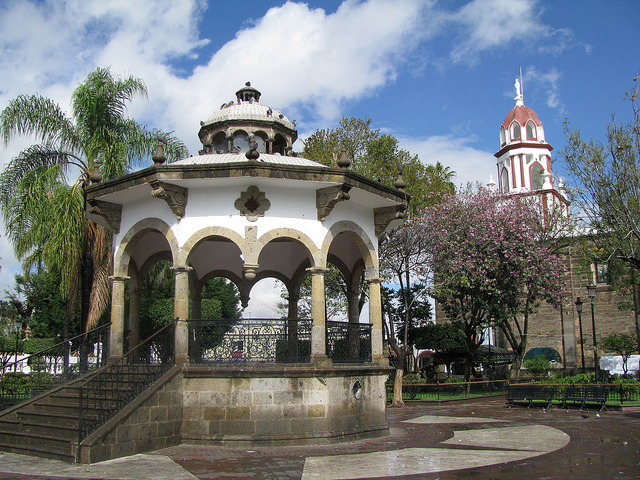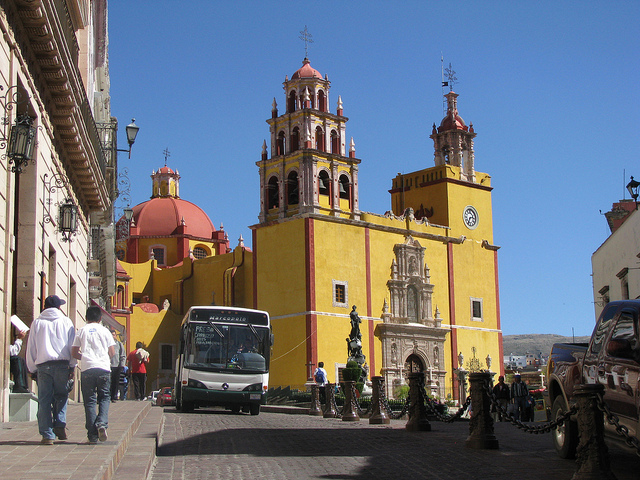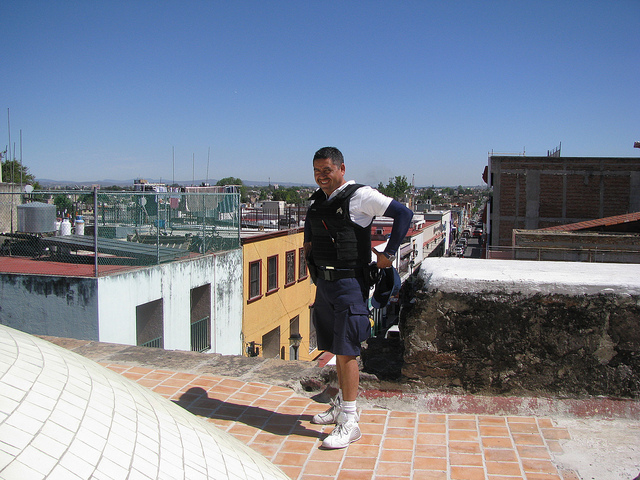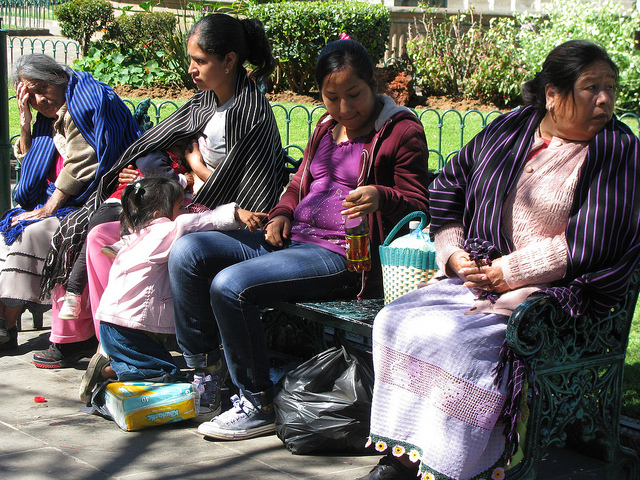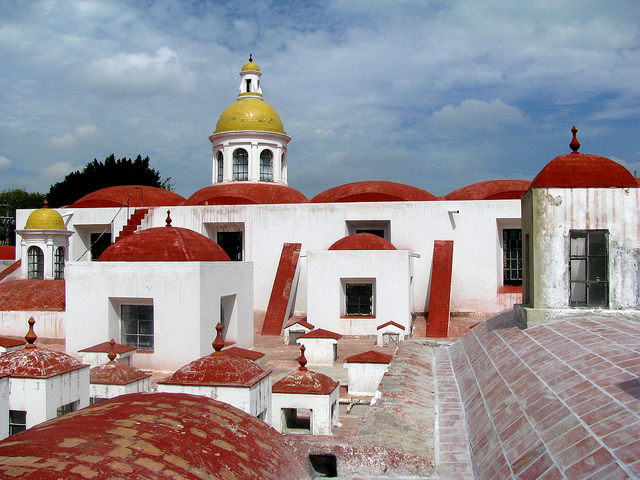After my very chilly first night in Mexico I woke up at 7 am at my homestay in Tlaquepaque, a pretty suburb of Guadalajara. Although I had three blankets to keep me warm, the wet and cold weather kept me frozen all night. When I got up for breakfast, my homestay hostess Graciela explained to me that the current weather – it had been raining for almost a week – was extremely unusual, and that it was abnormally cold. This was aggravated by the fact that Mexican homes generally do not have heating. So the only way you can stay warm is by covering yourself with multiple blankets.
Fortunately, as the sun came up, it started to warm up quite quickly. After Graciela’s breakfast, a tasty omelette with some tea, Michael, the American language student living across the courtyard, picked me up and took me over to the language school, the Guadalajara Language Center. The school is located very centrally in Tlaquepaque, a very picturesque and safe district within Guadalajara.

The gorgeous cathedral of Tlaquepaque
Today was Thursday and I had planned a weekend excursion to the city of Guanajuato from Friday to Sunday. Guanajuato is a city in the Mexican Highlands, which is about four hours by bus from Guadalajara. A former mining town, it is renowned for its rich historic architecture and the unique topography among the surrounding mountains. I had made arrangements with Tourism Guanajuato to spend two and a half days in this gorgeous mountain city and had already booked my bus tickets with the ETN bus line online in Canada before my departure.
Wouter, the owner of the Guadalarara Language Center, called the bus line locally to confirm my ticket, and since we were unable to print the ticket out online, he suggested that I go to Guadalajara’s local bus terminal and pick up the tickets in person. To that end he explained the Guadalajara bus system to me: there is actually no real map of the bus system, and there are very few signposted bus stops. Instead, a local expert will tell you where to go to catch the bus and you simply put yourself where there are several people waiting and flag down the bus that you need.

Metal mariachi on Tlaquepaque’s main street
Since I had to go to the Estacion Nueva, Wouter drew me a diagram of where to go in Tlaquepaque to catch the local bus to the terminal, and off I went on my first real Mexican adventure on this trip. I walked several street blocks south of the language school, past the main square and downtown area of Tlaquepaque. The main square, or “zocalo”, is a very attractive public space, with a wide open plaza, called “El Jardín Hidalgo”, with decorative trees and benches, a (bandstand) – a mandatory feature of every Mexican zocalo. Two big churches flank this attractive public space on the west and north side.
Straight up from the zocalo is “El Parián”, a large central quadrangle surrounded by identical buildings with columned arcades on all four sides that hold 18 restaurants. All the restaurants look out on a very attractive interior courtyard that also has a bandstand in the centre. El Parián is a popular place to go to enjoy live mariachi music, where musicians wonder from table to table.

The bandstand in Tlaquepaque’s El Parián
I also took a brief walk down the main street of Tlaquepaque, a cobble-stoned pedestrian street called Calle Independencia that features dozens of attractive galleries, arts and craft shops, bars, cafés and restaurants. Tlaquepaque is an internationally renowned centre for the production of pottery, textiles and blown glass, and locally crafted works are on display at all the various arts and crafts stores. I was already looking forward to browsing some of these stores to discover local art.
Slowly but surely the sun came out and dried off the sidewalks and streets. The beauty of downtown Tlaquepaque started to reveal itself and I felt great that I had made a good choice for my destination in Mexico. I walked further south to Calle Porvenir where there was one of these unsigned bus stops that Wouter had been telling me about. About a dozen people or so were waiting at the street corner, flagging down different busses which were arriving frequently. I asked one of the locals which bus I needed and he was very helpful and gave me the proper instructions. Finally, my bus arrived and I hopped on. All the seats and even most of the aisle were full, so I stood beside the driver and peaked out through the windscreen to get my first look at greater Guadalajara during the daytime.

One of the many galleries in Tlaquepaque
It took about half an hour to get to the Estación Nueva, and after I got off the bus I had to cross the highway over an elevated bridge. A young local joined me, introduced himself as Tino and told me he used to work as a chef in New Jersey and that he loved to speak English. Once we arrived on the other side of the highway, Tino took me to the bus terminal and pointed the ETN counter out to me. I got my return tickets to Guanajuato printed and was now ready for continuing my explorations.
I had decided to visit the arts and crafts market in Tonalá, another suburb of Guadalajara just east of Tlaquepaque, which is renowned for its large selection of reasonably priced artistic products. There was a bus running from the Estación Nueva to Tonalá, but after waiting for almost half an hour at the terminal I decided that I would take a taxi. Once inside the taxi, the driver immediately introduced himself as Alfonso and started to pepper me with questions, where I am from, what I am doing in Mexico, whether I am married, how many kids etc. He was harmless enough, but I felt a little strange about his inquisitiveness.

Colourful pottery in Tonalá
Once arrived in Tonalá I paid him the agreed 50 pesos and started to explore Tonalá on foot. The famous Tonalá arts and crafts street market is held twice a week on Thursdays and Sundays. I started strolling from stall to stall and admired the colourful pottery, ceramic and glass objects as well as all sorts of other handrafted items. Various local vendors were selling homemade food to the locals and the colourful action and local ambience were a dream for a photographer like me.
Rather famished by mid-day, I sat down for a late lunch at a restaurant called “El Jardín” where I enjoyed my favourite soup, “sopa azteca”, a classic Mexican dish made with a tomato broth, tortilla strips and diced avocado, which I followed up with a cheese tortilla with refried beans and guacamole. Then I continued my walk through the Tonalá Arts and Crafts Market for another hour or so before I checked with some locals for the bus station of the local municipal buses that would take me back to Tlaquepaque.

Lunch in Tonalá
Sure enough they pointed me to the right street corner where there was another unsigned bus stop. Several people were waiting already for the frequent busses that were heading to different directions. I soon saw one with a sign for Tlaquepaque in the window and flagged it down. On the way back I took in impressions of modest working class houses that made up most of the housing stock in this part of Guadalajara.
Back in Tlaquepaque in the late afternoon I got off the bus near the Zócalo, and had another look at the Parián and the downtown pedestrian zone. In a local market I picked up some cereal, some milk and fruit so I would be able to easily make myself breakfast without having to wake up my homestay hostess Graciela every morning.

The dome of Tlaquepaque’s cathedral
Filled with the impressions of a busy day, I spent the rest of the evening at my homestay reading up about Guanajuato, my weekend destination for the next two days. I would need a good night’s sleep because tomorrow I would have to leave at 5;30 in the morning to go to the bus station for my bus trip to Guanajuato, one of Mexico’s most beautiful silver mining towns.
